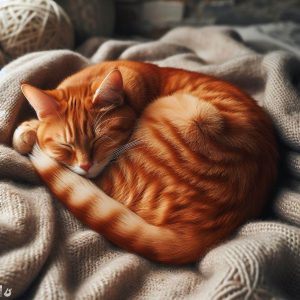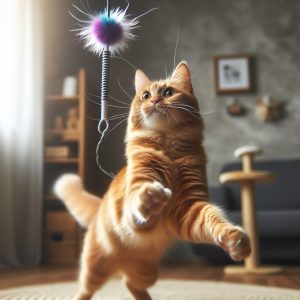As a cat parent, you’ve likely encountered your furry friend’s bizarre obsession with adhesive tapes, glues, and sticky substances. Your curious kitty licks tape, chews up sticky notes, and tries to rip masking tape off surfaces. So why are cats attracted to adhesives?
This peculiar fixation may seem like a random quirk, but it stems from specific reasons. By understanding the science behind your cat’s adhesive appeal, you can better curb risky behaviors. In this article, we’ll dive into the theories behind why cats like adhesive and how to steer them safely away from their sticky fascinations.
Adhesives Have Potent, Irresistible Scents to Cats
One major factor drawing cats to adhesives is smell. Cats have a far superior sense of smell compared to humans. Their tiny nostrils have 200 million odor sensors, while our noses only have 5 million.
Products like duct tape, super glue, rubber cement, and some sticky notes contain strong-smelling chemicals that produce vapors. With their ultra-sensitive sniffers, cats detect these adhesive aromas long before we do.
Specific adhesive ingredients like cyanoacrylate and rubber give off sweet, fruity odors. Other chemicals produce meaty, savory smells. These potent scents spark cats’ curiosity and overwhelm their noses.
Adhesive smells also differ from typical home scents, like furniture, carpets, and plastic. The novel aromas stand out as foreign and intriguing. A cat’s drive to investigate new things draws them toward the adhesive scents.
So for both potency and novelty, adhesive fumes beckon curious cats over to explore through sniffing, licking, and chewing. Their scented siren song is too hard for cats to resist.
Cats Enjoy the Unique Texture of Adhesives on Their Tongues
Texture is another key adhesive attribute attracting cats. Feline tongues have tiny barbs that make them feel rough and sandpapery. This abrasive surface helps them groom and adds sensory feedback as they lick.
When cats lick tape, they feel the smooth, tacky texture against their rugged tongues. Adhesives have a subtle cling and pull to them, engaging the surface of the tongue in a unique way.
This sticky sensation provides interesting physical stimulation for cats. Especially as their tongues catch on the adhesive, they get a light tugging feeling that is pleasing to their senses.
Beyond just smelling adhesives, cats are drawn to lick them simply to interact with their one-of-a-kind tactile properties.
Adhesive Scents Fool Cats’ Noses into Smelling Food
With their super-charged odor sensors, cats can identify smells up to 5 times better than dogs. But their prowess for scent doesn’t make them immune to mistakes. Their powerful sniffers can still be tricked by certain smells.
In the case of adhesives, cats often misinterpret the scents as being food. For example, cyanoacrylate in super glues and rubber cements produces a sweet, fruity aroma when vaporized. To a cat, this can smell similar to sugary treats or fruit snacks.
Likewise, the solvents in duct tape adhesive can emit meaty, savory odors that may register as delicious to cats. So their brains erroneously interpret adhesive fumes as edible food aromas.
This false positive sets their mouths watering and compels them to lick, nibble, and even try to eat the adhesive item in hopes of getting a tasty reward. Too bad for them it’s just a stick, not a snack!
Adhesives Activate Cats’ Drives for Playing, Hunting, and Killing Prey
Another factor drawing cats to adhesives is that they tap into their natural play, prey, and kill drives. These instincts are woven into feline DNA, and adhesives strangely activate them.
When a piece of tape or sticky note clings to their fur or paws, it triggers their hunt and pounce reflexes. They’ll excitedly attack the “prey,” biting and wrestling with it until it detaches or rips apart.
But then the adhesive will re-stick to them and the game begins anew. This creates an endless loop of chasing, hunting, shredding, and killing their adhesive “prey.” The more the tape sticks and peels, the more cats are compelled to attack it.
So adhesives like masking tape become the perfect solo cat toys. Their movements and interactions drive cats wild by firing up their primal play and prey drives.
Dangers of Cats Actually Ingesting Adhesives
While adhesive fascination is mostly innocuous, cats eating and ingesting glue, tape, or sticky notes can potentially make them sick. Many adhesives contain toxic chemicals and substances that cause:
- Digestive upset – Vomiting, diarrhea, gastric distress
- Throat/mouth irritation – Drooling, pawing at mouth, gagging
- Blockages or obstructions – Can’t pass stool, constipation, intestinal perforation
For example, cyanoacrylate in super glue bonds almost instantly. Eating even a small amount could glue the mouth or esophagus shut. Duct tape adhesive solvents can irritate the digestive tract.
Swallowing adhesive-coated sticky notes could also obstruct or clog the intestines. So it’s vital to keep adhesives safely away from cats.
Closely monitor them around open glue, loose tape, and accessible sticky notes. Be ready to promptly remove them from temptations before they can ingest anything.
Actionable Ways to Stop Your Cat’s Adhesive Obsession
Has your crafty kitty become hopelessly hooked on adhesives? Don’t despair. With some clever training techniques, you can curb their fixation and steer them away from sticky hazards.
Remove All Tempting Adhesive Items from Reach
The most direct tactic is to eliminate accessible sources of temptation. Keep desk supplies like tape, glue sticks, and sticky notes locked in drawers and cabinets.
Store craft materials like rubber cement and super glue on high shelves cats can’t access. Don’t leave any adhesives unattended within paw’s reach.
Use Bitter Anti-Chew Sprays to Deter Licking
Apply nasty-tasting but harmless bitter apple and anti-chew sprays to adhesives. The awful flavor they leave in your cat’s mouth will teach them not to lick tape, glue, etc. Reapply frequently.
Repel with Strong Scents Cats Dislike
Use odors cats detest to override adhesive’s appealing aromas. Rub citrus peels on them or place cotton balls with citrus, mint, or vinegar nearby to repel your cat.
Redirect Your Cat’s Attention with Interactive Toys
Distract and divert their fixation by engaging their energy in catnip toys, play tunnels, feather wands, and laser pointers. Provide a more rewarding activity to transfer their obsession.
Check for Concerning Symptoms if Ingestion Occurs
If you suspect your cat licked or ate adhesive, monitor them closely for signs of drooling, vomiting, choking, or appetite loss. Call your vet promptly if symptoms appear. Early treatment improves recovery odds.
Place Perches Nearby to Supervise Your Projects
Put up a tall cat tree or shelf near your desk or work table. It allows your cat to perch within view of your adhesive tasks without having access to interfere.
Use Double-Sided Tape as an Aversion Training Tool
To protect furniture and surfaces, apply strips of double-sided tape. Cats dislike touching its stickiness, so it deters them from adhesive prone areas.
With persistence and providing suitable scratching outlets, you can overcome your cat’s adhesive habits. Curb the craving with cat-friendly training techniques.
Why Cats Feel Magnetically Drawn to Adhesives: Key Takeaways
While your cat’s addiction to tape, glue, and other adhesives may seem peculiar, it stems from primal drives and natural instincts:
- Scent – Adhesives emit ultra-potent, intriguing odors cats feel compelled to investigate
- Texture – Stickiness provides unique tactile stimulation cats find pleasing
- Taste – Adhesive scents fool cats into thinking they smell edible food
- Play – Adhesives activate cats’ prey drive for stalking, hunting, and shredding
Though mostly harmless, adhesive fascination poses risks if cats actually ingest glue, tape, or notes. With proper training and providing stimulating scratching outlets, you can healthfully handle your cat’s adhesive habits.
Curb the adherence without dampening your cat’s adventurous spirit. Give their curiosity a sticky-free outlet and you’ll have a happy, hazard-free kitty.



